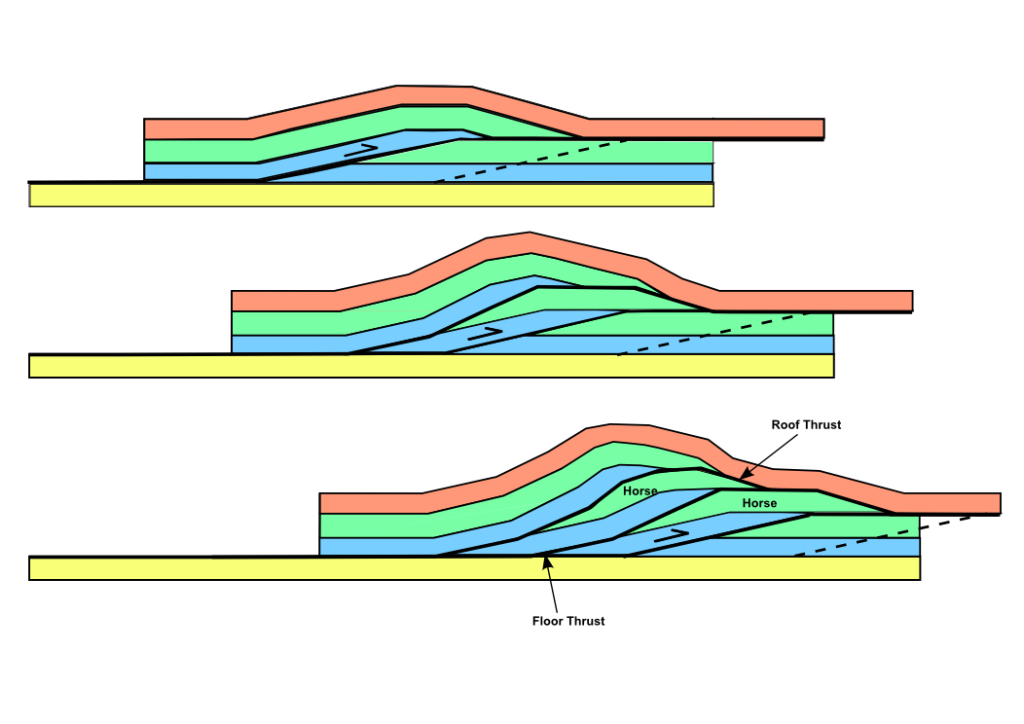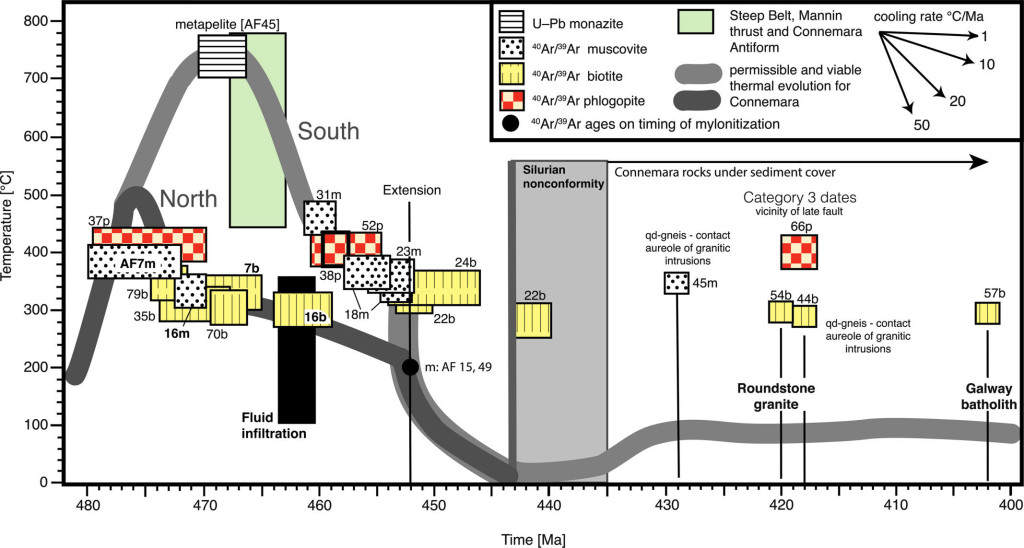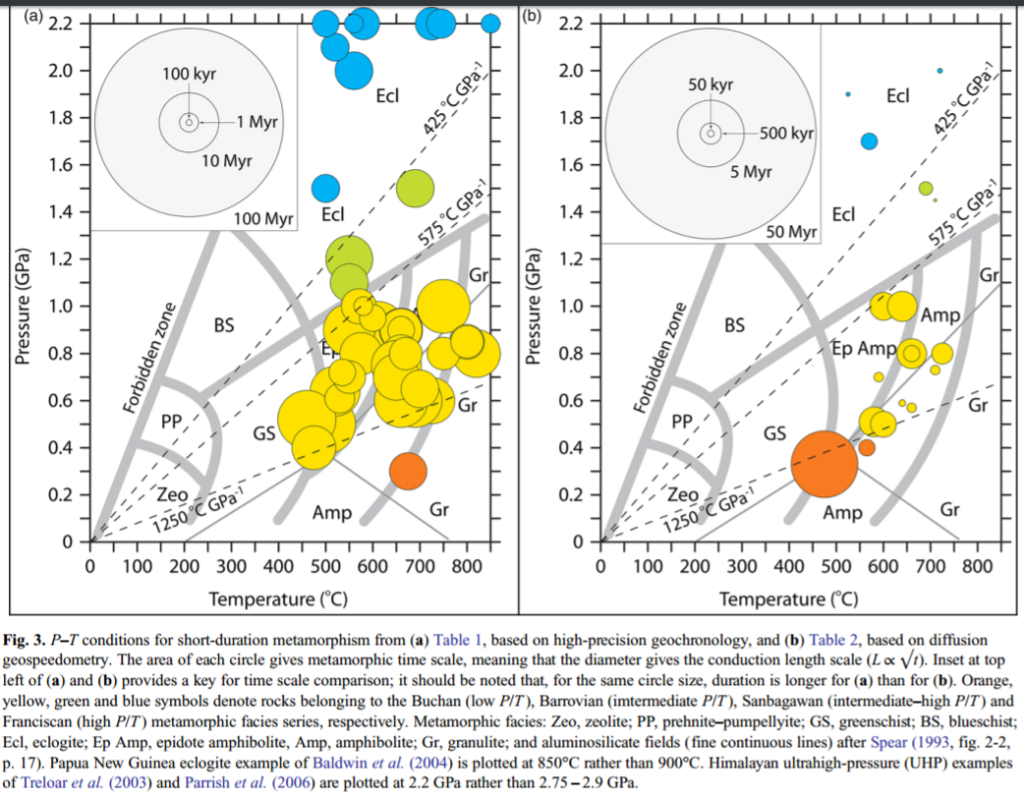My blogging torpor has been ended by a super-interesting new paper that links together many of my favourite topics. It includes eclogites, metamorphic petrology, ultra-fast metamorphism, determining timescales via diffusion profiles, tectonic overpressure and even the Grampian-Taconic orogeny and opens up new avenues of research. What more could I ask for from a scientific paper?
The Rocks
The paper, “Ultrafast eclogite formation via melting-induced overpressure” by Chu et al. has just been published. It’s based on a very close study of a set of rocks from Connecticut in the USA. They are part of the Taconic orogeny, (also seen in Connemara, Ireland, my old field area) which was caused by an Arc colliding with a continent.
The particular location is within a tectonic slice and consists of felsic paragneisses (metamorphosed muds and sandstones) containing lenses of mafic and ultramafic rock (metamorphosed gabbro). The gneisses are migmatitic – they were partially melted. The whole area of high-grade rocks is bounded by mica schists, within 50m, suggesting the heating of the rocks was localised.
The mafic lenses are eclogitic – they contain an eclogite facies assemblage of minerals that formed under high pressure. As is common in eclogites, some of the peak minerals have retrogressed (changed) back into fine mixtures of lower pressure minerals called symplectites. The phengite and omphacite are now symplectite pseudomorphs but garnet (Twitter’s 5th most popular mineral) remains itself and contains some invaluable information.
The chemical analysis
The paper describes estimates of the conditions of metamorphism, derived from various forms of analysis. The garnets are the key to this, as they show a wide range of different compositions. Since they grow outwards, the change of compositions from the core captures changing metamorphic conditions as the garnet grew. The image below is a map of the amount of particular chemical elements within the garnet. The different colours represent different amounts and since the chemistry of the garnet depends on the pressure and temperature while it grew, this gives us a lot of information.
As marked on the image above, parts A-C record heating at around 8 kbar (typical crustal depths) from 660 to 790°C, then D represents eclogitic conditions of 14 kbar and E a return back to 8 kbar.
Speed
Garnets that have spent a long time at high temperatures lose their chemical zoning due to diffusion. Since we understand the speed at which diffusion works, we can use chemical zoning in minerals to estimate the speed of metamorphic processes. Look at the images above and you’ll notice that the boundaries between the different domains are quite sharp. Using two sets of forward modelling (one of the diffusion profiles and another of the garnet growth) they conclude that the pressure increase (C-D above) took only 500 years. The pressure decrease (D-E above) also took only 500 years. These are not the sort of timescales geologists are used to dealing with. I’ve been to educational establishments that have lasted longer than 500 years – it’s no time at all.
These dates cannot be explained by normal models of eclogite formation, which involve subduction of material and eventual return to shallower depths. Rates of subduction are measured in cm per year, but to explain the rate of pressure increase this way would require rates of 30m per year.
How does pressure change so fast?
The usual assumption in metamorphic petrology is that the pressure recording by the minerals is lithostatic pressure – that caused by the weight of rocks above. This is useful as it allows you to track the rocks passage into and out of a subduction zone or mountain belt and so link metamorphic P-T estimates to tectonic models. A number of recent papers have started to challenge this assumption. Their approach varies, but all suggest that rocks can experience high pressures without being buried to great depth.
What’s so great about Chu et al. is that is provides direct evidence of this happening and offers an explanation as to how it happened.
Burying rocks at 30m a year is not credible, so if we accept their estimates for the speed and amount of pressure increase (it persuades me, but more knowledge people than me may disagree) we must look for ways of generating high pressure without piling up more rocks on top.
Chu et al.’s explanation takes us back to the unusual location of these rocks, within a narrow active shear zone surrounded by colder rocks. They see rocks as being rapidly heated due to strain heating along the shear zone. This one of the mechanisms invoked by those arguing that localised and rapid metamorphism is more common that we thought. The narrow zone of hot rocks is surrounded by colder more rigid walls. As the rocks start to melt, the sudden volume increase causes an ‘autoclave’ effect, a sudden local deviation above lithostatic pressure. This causes the rapid growth of eclogitic minerals with the mafic pods. Soon the melt escapes or crystallises, reducing the pressure back to normal.
What does it all mean?
This paper adds a fascinating petrological argument supporting the theoretical studies suggest that overpressure within metamorphic rocks is possible. No longer can the mere presence of high-pressure minerals necessarily indicate the rocks was buried to great depths.
As the authors say, it does not invalidate most of what we know about eclogites. The mechanism described does not apply to the many ultra-high pressure terranes like Western Norway where large volumes of eclogitic rocks exist – these surely did get stuffed deep into a subduction zone.
My first thought was of the Glenelg eclogites in Scotland. This is a small area of eclogite within a high strain zone which makes very little tectonic sense. Perhaps this is a candidate for being formed by local overpressure? As far as I can tell they aren’t associated with migmatites, which makes them not directly analogous. But the point is that there is a new possible interpretation for them, new avenues of research. That’s what makes this paper so interesting to me.
Please read it, and if you think it’s wrong, let me know.
Chu, Xu, et al. “Ultrafast eclogite formation via melting-induced overpressure.” Earth and Planetary Science Letters 479 (2017): 1-17.
Update: another possible candidate for this effect in Scottish rocks is within the Central Highlands Migmatite Complex. See brief description and my write-up of a discussion of the significance of these rocks.









